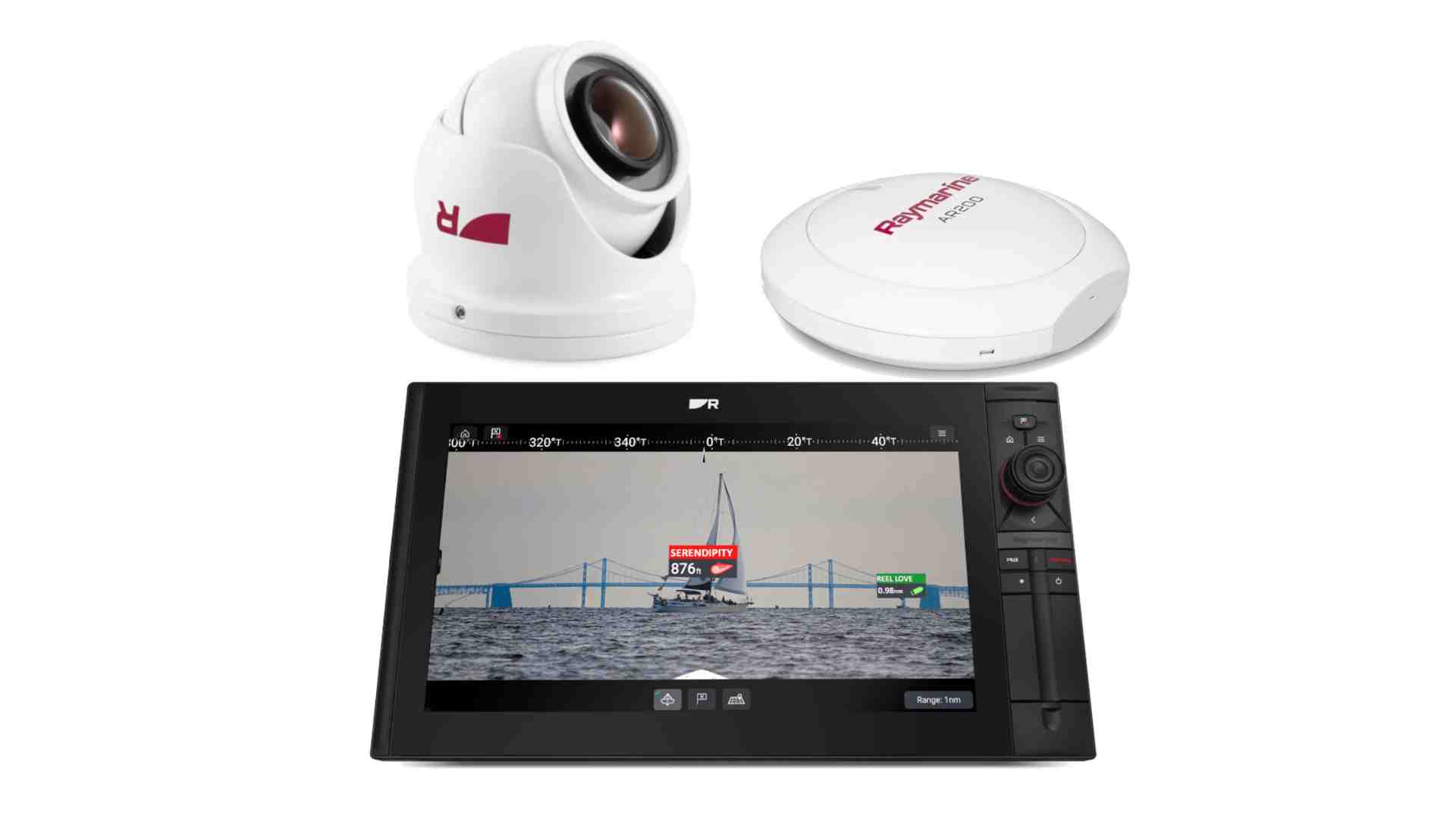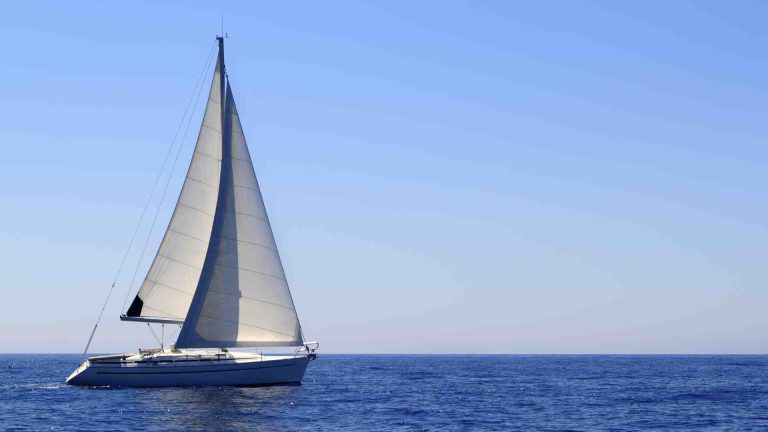A Comprehensive Review of the Raymarine CAM300
The Raymarine CAM300 is a high-performance marine camera tailored for boating enthusiasts and professionals alike. Engineered to enhance onboard observation and navigation, this compact, rugged device integrates seamlessly with Raymarine’s Axiom chartplotters, delivering exceptional video quality and advanced features. In this in-depth review, we’ll explore the CAM300’s design, technical specifications, performance, installation process, and how it stacks up against competitors. We’ll also incorporate user feedback to provide a well-rounded perspective, helping you determine if this camera meets your marine needs.
Understanding the Raymarine CAM300: A Marine Imaging Powerhouse
The Raymarine CAM300 is more than just a camera—it’s a sophisticated tool designed to elevate the boating experience. Built for marine environments, it combines high-definition video, a wide field of view, and infrared night vision into a compact, durable package. Whether you’re monitoring blind spots, recording fishing action, or enhancing navigation safety, the CAM300 promises reliability and versatility.
Picture yourself navigating open waters, surrounded by endless horizons. The CAM300 captures every moment in vivid detail, from the shimmering hues of a sunset to the subtle movements of marine life. Its high-resolution imaging ensures that nothing escapes your notice, making it an invaluable companion for both leisure and professional boating. Beyond visuals, its wide-angle lens and night vision capabilities provide situational awareness, day or night, ensuring you’re always in control.
Technical Specifications
Here’s a breakdown of the CAM300’s core specifications:
| Feature | Specification |
|---|---|
| Resolution | 1280 x 720 pixels (up to 1080p with 3MP CMOS sensor) |
| Lens | Wide-angle, 125° horizontal FOV, 70° vertical FOV |
| Night Vision | Infrared LEDs, 10-meter (33-foot) range |
| Connectivity | Ethernet (Power over Ethernet or direct 12V DC) |
| Power Requirement | 12V DC (10.8V–15.6V range), 1W nominal, 1.8W max |
| Waterproof Rating | IP66 (dust-tight, water-resistant) |
| Operating Temperature | -20°C to +65°C (-4°F to 149°F) |
| Dimensions | 59.5 mm base diameter, 52.9 mm height |
| Weight | 0.42 kg (0.926 lbs) |
These specs highlight the CAM300’s ability to perform in demanding marine conditions while maintaining energy efficiency and seamless integration with Raymarine systems.
Design and Build: Sleek, Durable, and Marine-Ready
The Raymarine CAM300 stands out not only for its functionality but also for its thoughtfully crafted design. Its compact, streamlined body—measuring just over 2 inches tall—blends effortlessly with any vessel’s aesthetics, whether it’s a sleek yacht or a rugged fishing boat. This small footprint offers flexible mounting options, from the mast to the cabin roof, without compromising performance.
Aesthetics and Build Quality
Crafted with marine-grade materials, the CAM300 is built to endure the harsh realities of life at sea. Its IP66-rated enclosure protects against water ingress, dust, and vibrations, ensuring longevity even in rough conditions. The stainless steel body beneath its painted exterior resists corrosion, a critical feature for saltwater environments. This combination of durability and style makes the CAM300 a practical yet visually appealing addition to your boat.
However, user experiences have revealed potential vulnerabilities. Some owners report condensation issues after prolonged exposure to extreme weather, suggesting that while the design is robust, seal integrity may vary across units. Despite this, the camera’s rugged construction generally holds up well, offering peace of mind for long-term use.
User Interface and Controls
Ease of use is a priority with the CAM300. Its intuitive interface integrates seamlessly with Raymarine Axiom chartplotters, allowing you to view up to four video streams simultaneously on a single display. The accompanying user manual provides clear instructions for setup and operation, making it accessible to both novices and seasoned boaters. Controls are straightforward, with options to flip or invert the image for various mounting configurations, ensuring flexibility without complexity.
Performance: Exceptional Imaging for Day and Night
The Raymarine CAM300 excels in delivering top-tier performance tailored to marine applications. Its advanced features set it apart as a leader in onboard video systems.
Image Quality and Resolution
Equipped with a 3MP CMOS sensor, the CAM300 offers up to 1080p resolution, capturing crisp, detailed footage. Whether you’re documenting a day on the water or monitoring your surroundings, the camera’s high-definition output ensures clarity. The wide-angle lens (125° horizontal field of view) provides expansive coverage, reducing blind spots and enhancing safety. Users consistently praise the vibrant colors and sharp imagery, making it ideal for both practical and recreational use.
Night Vision Capabilities
The CAM300’s infrared night vision is a standout feature, illuminating up to 10 meters (33 feet) in complete darkness. Six built-in 850nm infrared LEDs ensure clear visibility, allowing you to navigate or monitor your vessel confidently after sunset. This capability is a game-changer for nighttime operations, offering a level of security and awareness that few competitors match. User tests, such as those shared on forums, demonstrate its effectiveness even in pitch-black conditions, with clear imaging of distant objects like fences or buoys.
Installation and Setup: Simple and Efficient
Installing the Raymarine CAM300 is designed to be straightforward, minimizing downtime and technical hurdles for boat owners.
Equipment and Tools Required
To get started, you’ll need:
- Screwdriver
- Drill
- Ethernet cable
- Mounting brackets (included)
- 12V DC power source or Power over Ethernet (PoE) setup
These common tools and the camera’s included accessories make installation accessible without specialized equipment.
Step-by-Step Installation Guide
- Select a Location: Choose a spot with optimal visibility, such as the bow or mast.
- Mount the Camera: Secure the brackets using the screwdriver and drill.
- Connect the Ethernet Cable: Plug one end into the camera’s RJ45 port.
- Link to the Network: Attach the other end to your boat’s Axiom system or network switch.
- Power Up: Connect to a 12V DC source or use PoE for a single-cable solution.
- Adjust the Angle: Position the camera for your desired field of view.
- Test the System: Verify functionality via your Axiom display.
This process typically takes less than an hour, and the camera’s rotating ball design simplifies fine-tuning.
Comparing the Raymarine CAM300 with Competitors
To assess the CAM300’s value, let’s compare it to alternatives in the marine camera market, such as generic IP cameras or action cams like the GoPro.
Similarities and Differences
| Feature | Raymarine CAM300 | Generic IP Camera | GoPro (e.g., Hero 10) |
|---|---|---|---|
| Resolution | Up to 1080p | Varies (720p–4K) | Up to 5.3K |
| Night Vision | 10m IR range | Often limited or absent | None (requires lighting) |
| Marine Integration | Axiom-compatible, ONVIF S | Limited compatibility | None (standalone) |
| Waterproofing | IP66 | Varies (IP65–IP67) | IPX8 (with case) |
| Price | ~$500 | $50–$200 | ~$400 |
The CAM300’s seamless integration with Raymarine systems and marine-specific features like night vision give it an edge over generic cameras. While GoPros offer superior resolution, they lack direct MFD connectivity and require battery management, making them less practical for continuous monitoring.
Value for Money
Priced at approximately $500, the CAM300 sits at a premium compared to budget IP cameras. However, its durability, Axiom compatibility, and advanced features justify the cost for serious boaters. User reviews highlight its value when it performs as expected, though condensation issues have led some to question its reliability relative to cheaper alternatives.
- CAM300 Standalone: $499
- CAM300 + AR200 Augmented Reality Pack: $799
Is It Worth It?
- Yes, if you need marine-grade durability and Axiom integration.
- No, if you want long-range night vision or budget options.
User Reviews: Real-World Insights
The CAM300 has garnered mixed feedback from users, reflecting both its strengths and potential pitfalls.
Positive Experiences
- Wdlfbio (Forum User): “Wow! And that’s only a $500ish camera. The night vision is impressive—110 feet to the fence was crystal clear.”
- Many users praise the camera’s image quality and ease of integration with Axiom displays, noting its effectiveness for docking and monitoring.
Challenges and Concerns
- Seadogdave: “It worked faultlessly for months, but after a storm, condensation filled the lens. At over £500, I expected better durability. The replacement process is underway, but I’m skeptical.”
- Arcady: “Mine failed within a year due to condensation. Iris offered a replacement, but for nearly £500, it’s disappointing.”
- Users frequently cite water ingress as a recurring issue, particularly in harsh weather, raising questions about seal quality despite the IP66 rating.
Manufacturer Response
Iris, the OEM for Raymarine, has acknowledged condensation problems in newer units and is reportedly addressing them through improved testing and design tweaks. Warranty replacements are offered, but long-term reliability remains a concern for some.
Pricing and Availability
The Raymarine CAM300 retails for around $500 USD (approximately £500 GBP), available through Raymarine dealers and marine electronics retailers. Optional accessories, like the AR200 sensor for ClearCruise Augmented Reality, add roughly $400 to the cost, enhancing navigation capabilities.
| Item | Price (USD) |
|---|---|
| CAM300 Camera | $500 |
| AR200 Sensor | $400 |
| Total (with AR200) | $900 |
Conclusion: Is the Raymarine CAM300 Worth It?
The Raymarine CAM300 is a standout marine camera, offering high-definition imaging, night vision, and seamless integration with Axiom chartplotters. Its compact design and rugged build make it a versatile tool for monitoring, navigation, and capturing memories on the water. For boaters who prioritize quality and system compatibility, it’s a worthy investment despite its premium price.
However, user reports of condensation issues highlight a potential flaw that could undermine its reliability in extreme conditions. While Raymarine and Iris are addressing these concerns, prospective buyers should weigh this against their specific needs. If you need a dependable, marine-specific camera and can tolerate the occasional hiccup, the CAM300 delivers exceptional value. For those on a budget or seeking alternatives, cheaper IP cameras or action cams might suffice, albeit with trade-offs in integration and durability.
In the end, the Raymarine CAM300 elevates the boating experience with its advanced features and robust design—when it works as intended, it’s hard to beat.
Happy Boating!
Share A Comprehensive Review of the Raymarine CAM300 with your friends and leave a comment below with your thoughts.
Read A Comprehensive Review of the Raymarine CAM210 until we meet in the next article.






